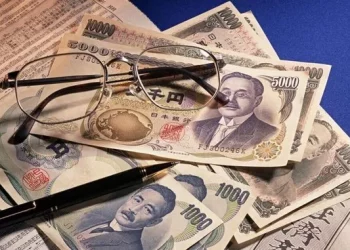The Russian Ruble (RUB) is the official currency of the Russian Federation, a nation that spans 11 time zones and is one of the largest and most resource-rich countries in the world. As the national currency of a country with significant global influence, the Ruble plays a crucial role not only in Russia’s domestic economy but also in international trade, particularly in the energy sector. Russia is one of the world’s top exporters of oil and natural gas, and the Ruble’s value is deeply intertwined with global energy markets. However, despite its importance, the Ruble has experienced considerable volatility over the years, driven by a complex mix of economic, political, and geopolitical factors. This article will explore the history of the Ruble, the key factors that shape its value, and its evolving role in the global economy.The Russian Ruble has a long and fascinating history that reflects the country’s economic and political evolution. Its origins date back to the 13th century, when it was first introduced as a unit of weight for silver. Over the centuries, the Ruble became a symbol of Russia’s economic power, particularly during the Tsarist era and later under the Soviet Union.
A Brief History of the Russian Ruble
Origins and Early Development: The Russian Ruble has a long and storied history, dating back to the 13th century when it was first introduced as a unit of weight for silver. Over the centuries, the Ruble evolved into a formal currency, becoming a symbol of Russia’s economic and political power. During the Soviet era, the Ruble was tightly controlled by the state, with its value pegged to the US Dollar and its circulation restricted to domestic use.
Post-Soviet Transition: The collapse of the Soviet Union in 1991 marked a turning point for the Ruble. The newly formed Russian Federation introduced a new Ruble in 1998, replacing the old Soviet Ruble at a rate of 1,000 to 1. This transition was accompanied by significant economic challenges, including hyperinflation and a severe financial crisis in 1998, which led to a sharp devaluation of the Ruble.
Modern Era: In recent years, the Ruble has experienced periods of stability and volatility. The currency’s value is closely tied to global oil prices, as Russia is one of the world’s largest exporters of crude oil and natural gas. Additionally, geopolitical tensions, such as sanctions imposed by Western countries, have had a profound impact on the Ruble’s performance in international markets.
Factors Influencing the Russian Ruble’s Value
Global Oil Prices: Russia’s economy is heavily dependent on its energy sector, with oil and gas exports accounting for a significant portion of its GDP. As a result, the Ruble’s value is highly sensitive to fluctuations in global oil prices. When oil prices rise, the Ruble tends to strengthen due to increased revenue from exports. Conversely, a decline in oil prices can lead to a depreciation of the Ruble.
Geopolitical Tensions and Sanctions: Geopolitical events, particularly those involving Russia’s relations with Western countries, have a direct impact on the Ruble’s value. Economic sanctions imposed by the US, European Union, and other nations have restricted Russia’s access to international financial markets, leading to capital flight and a weaker Ruble. For example, sanctions following Russia’s annexation of Crimea in 2014 caused the Ruble to lose nearly half of its value against the US Dollar.
Monetary Policy and Central Bank Actions: The Central Bank of Russia (CBR) plays a critical role in managing the Ruble’s value through monetary policy. The CBR uses tools such as interest rate adjustments, foreign exchange interventions, and reserve requirements to stabilize the currency and control inflation. For instance, during periods of economic instability, the CBR may raise interest rates to attract foreign investment and support the Ruble.
Inflation and Economic Stability: Inflation is a key factor affecting the Ruble’s purchasing power. High inflation erodes the value of the currency, making imports more expensive and reducing consumer confidence. The Russian government and central bank have implemented various measures to combat inflation, including tightening monetary policy and promoting economic diversification.
Foreign Investment and Capital Flows: Foreign investment plays a significant role in determining the Ruble’s value. When foreign investors are confident in Russia’s economic prospects, they are more likely to invest in Russian assets, increasing demand for the Ruble. However, political instability or economic uncertainty can lead to capital flight, causing the Ruble to depreciate.
The Role of the Russian Ruble in International Trade
Energy Exports: Russia is one of the world’s largest exporters of oil and natural gas, and the Ruble is closely tied to the energy sector. Many international energy transactions are conducted in US Dollars, but Russia has increasingly sought to promote the use of the Ruble in trade agreements, particularly with countries in Asia and the Middle East.
Trade Partnerships: Russia’s trade relationships with other countries also influence the Ruble’s value. For example, trade agreements with China and other members of the BRICS group (Brazil, Russia, India, China, and South Africa) have helped to diversify Russia’s trade portfolio and reduce its reliance on Western markets.
Currency Reserves: The Russian government holds significant foreign currency reserves, including US Dollars, Euros, and gold. These reserves are used to stabilize the Ruble during periods of economic uncertainty and to support the currency’s value in international markets.
Challenges Facing the Russian Ruble
Economic Sanctions: Economic sanctions imposed by Western countries have had a profound impact on the Ruble’s value. These sanctions have restricted Russia’s access to international financial markets, making it more difficult for the country to attract foreign investment and finance its debt.
Dependence on Oil Exports: Russia’s heavy reliance on oil and gas exports makes the Ruble vulnerable to fluctuations in global energy prices. A sustained decline in oil prices can lead to a significant depreciation of the Ruble, as seen during the oil price crash of 2014-2016.
Inflation and Economic Diversification: High inflation and a lack of economic diversification remain significant challenges for the Russian economy. While the government has made efforts to promote sectors such as technology and agriculture, the economy remains heavily dependent on natural resources.
The Future of the Russian Ruble
Economic Reforms: The Russian government has implemented various economic reforms aimed at stabilizing the Ruble and promoting long-term growth. These reforms include measures to reduce inflation, attract foreign investment, and diversify the economy away from its reliance on oil and gas exports.
Geopolitical Developments: Geopolitical developments, particularly Russia’s relations with Western countries, will continue to play a significant role in determining the Ruble’s value. A easing of sanctions or improved diplomatic relations could lead to a strengthening of the Ruble, while increased tensions could have the opposite effect.
Technological Advancements: Technological advancements, particularly in the financial sector, could also impact the Ruble’s future. The rise of digital currencies and blockchain technology may offer new opportunities for Russia to promote the use of the Ruble in international trade and finance.
Conclusion
The Russian Ruble is a currency shaped by a complex interplay of economic, political, and geopolitical factors. Its value is closely tied to global oil prices, making it highly sensitive to fluctuations in the energy market. Geopolitical tensions and economic sanctions have also had a significant impact on the Ruble’s performance, leading to periods of volatility and instability.
Despite these challenges, the Russian government and central bank have implemented various measures to stabilize the Ruble and promote long-term economic growth. Efforts to diversify the economy, attract foreign investment, and reduce inflation are crucial for ensuring the Ruble’s stability and resilience in the face of global uncertainties.
In summary, the Russian Ruble is a currency that reflects the strengths and challenges of the Russian economy. Understanding the factors that influence its value is essential for businesses, investors, and policymakers navigating the complexities of international finance. As Russia continues to adapt to a changing global landscape, the Ruble’s role in the global economy will remain a topic of significant interest and importance.
Related topics:



























